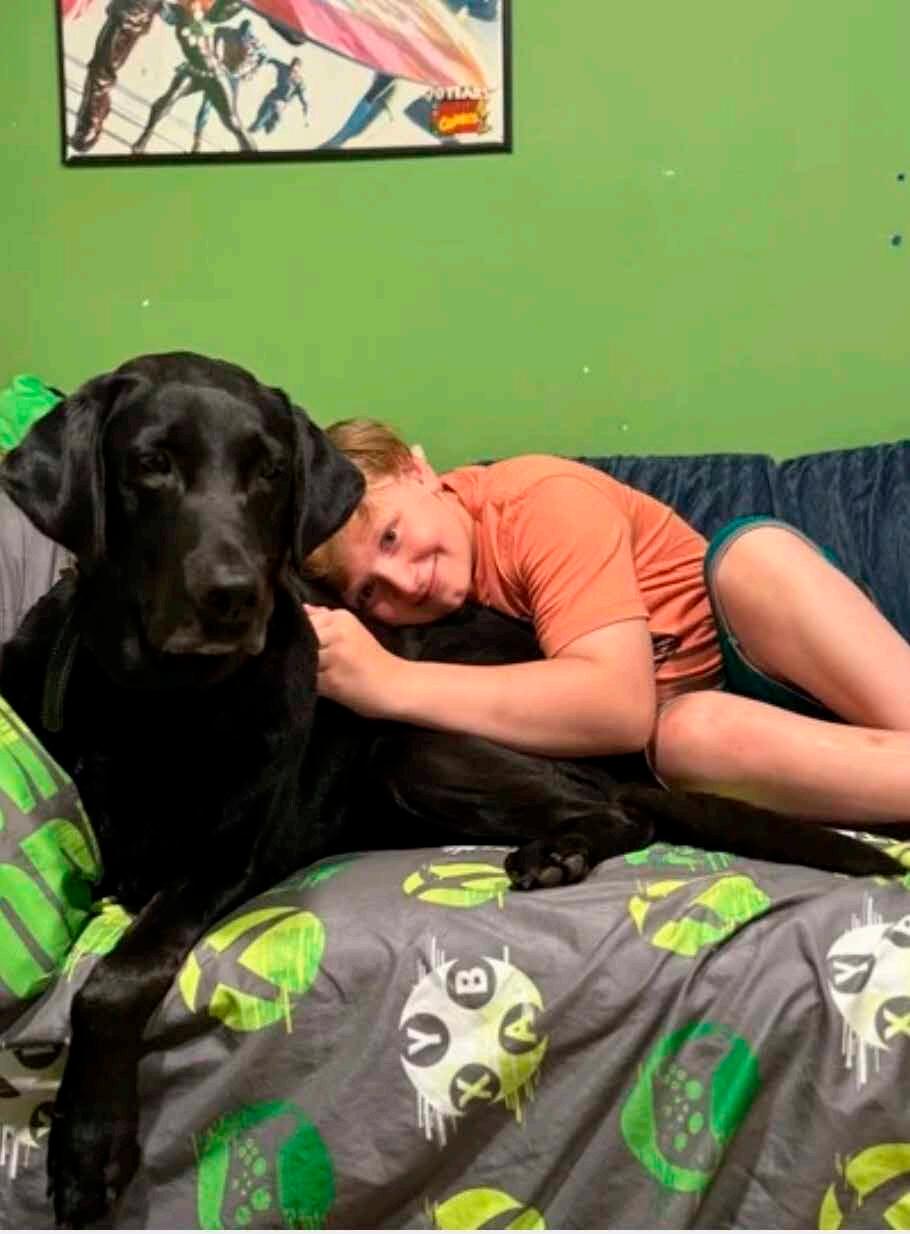
7 minute read
Your Story Matters:Meet The Isenhoff Family
BY KRISTIN DILLON
In the Isenhoff home —just north of Grand Rapids, Michigan— family life moves with a quiet kind of courage. Their days are shaped by early alarms, therapy appointments, weekday carpools, and the quiet choreography of caregiving. Time stacks up with logistics, school runs, and the invisible labor of self-regulation. But through the noise and necessity, something else pulses underneath: the grace of family life. Not a shiny kind of grace—but the kind that’s threaded in pain charts, pet hair, schedules, and long car rides with broken bones. It’s the kind that shows up when no one’s watching and holds everything together.

The Isenhoffs are a family of six: Ben and Rachelle (parents), Clair (20), Mark (18), Daphne (14), and James (12½). Their household also includes Luna and Maple (the dogs), Smudge, Marra, Shadow, and Sigh (the cats), and Lizzy, Rain, and Kay (the lizards). Yes, it’s a full house. But somehow, there’s space for everyone.
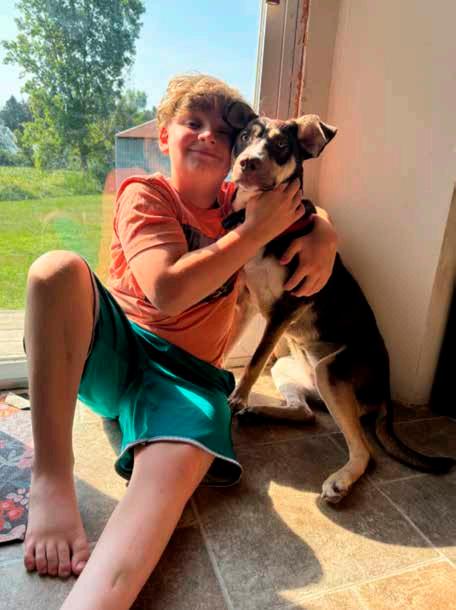
Their youngest, James, has broken more than 75 bones—mostly femurs, but also his skull, his arms, his ribs, and nearly everything in between. He lives with osteogenesis imperfecta (OI), a rare genetic condition that affects bone density and regeneration. It makes the body fragile in ways the world doesn’t always see.

When James was younger, the family spent countless days at Shriners Children’s Hospital in Chicago. Growth spurts and growing pains meant fractures nearly every three months. Rachelle started counting the breaks for him, in case he ever wanted to know. But eventually, she stopped.

“It just got to be too much,” she says. “I couldn’t carry the number anymore.”
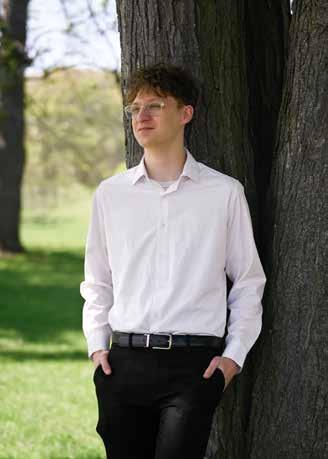
Now, they visit Shriners twice a year. James’s condition is managed with bisphosphonate medication, which helps slow bone breakdown by stabilizing the marrow—the spongy part of the bone where regeneration happens. What used to feel like a constant state of emergency has slowly become something softer— less about survival and more about showing up.
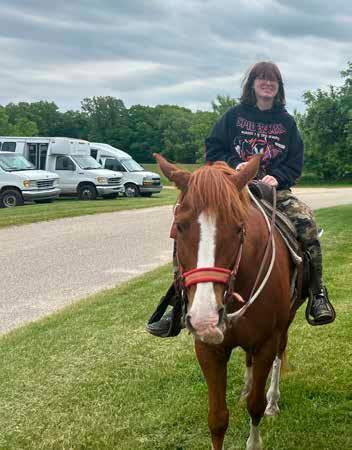
“Our days are starting to feel more... ‘normal,’” Rachelle says, hesitating. “I hate that word—but it’s the only one that fits. It just feels a little slower now. Like we can actually breathe a little.”

James still lives with pain, fatigue, and the aftershocks of medical trauma. But he also swims, plays video games, builds Lego worlds, and hangs out with his older siblings. He cuddles the dogs and cats (but makes one thing clear: “I don’t cuddle the lizards.”)

When asked what he likes about going to Shriners now, he smiles and says, “The toys—and when the volunteer dogs come in!”
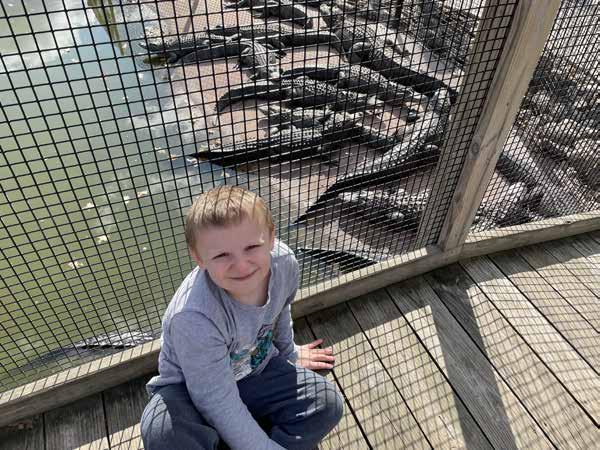
Inside the Rhythm
During the school year, mornings begin with Ben wrangling backpacks, water bowls, and school drop-offs while Rachelle heads to work. She’s usually home by 3 or 4 p.m.—just in time for dinner prep, homework help, and decompressing from the day.
“Sometimes the boys play video games together,” Rachelle says. “James watches TV shows with Daphne, and we all find our own ways to wind down.”
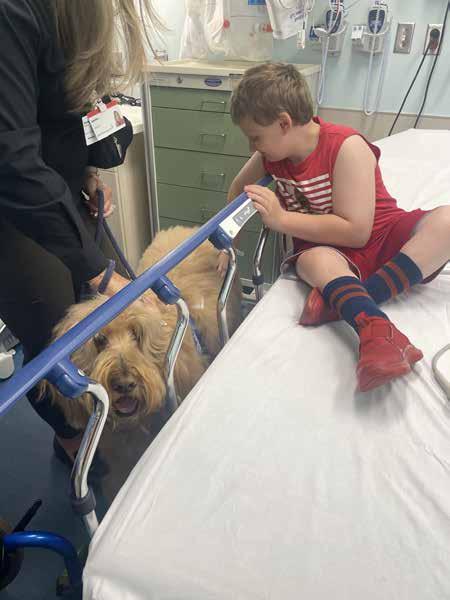
Everyone has their own space and solo hobbies. Ben plays Warhammer on the weekends. Rachelle listens to audiobooks while gardening, crocheting, and painting game miniatures. Clair, the oldest, is in college. Mark just graduated from high school, and often spends time at a friend’s house. Daphne’s in the thick of teenage life, soaking up the worlds of fashion and makeup.
And James—though the youngest— has shaped the family’s center of gravity. His strength, his pacing, his perspective—they’ve all reoriented what this family values and how it moves.
The Team Effort
This family runs on shared effort. Each person has one or two daily responsibilities—dishes, pet care, laundry, taking out the trash. It’s part of the rhythm, and no one is exempt.
“We all pitch in,” Rachelle says. “When everyone does a little part, it makes the work light. Then we can all relax.”
There’s a deep understanding here— of pacing, of one another’s limits, of what’s needed without being asked.
“James has taught all of us that community and family are everything,” Rachelle says. “When everyone gives a little, the impact is so big.”
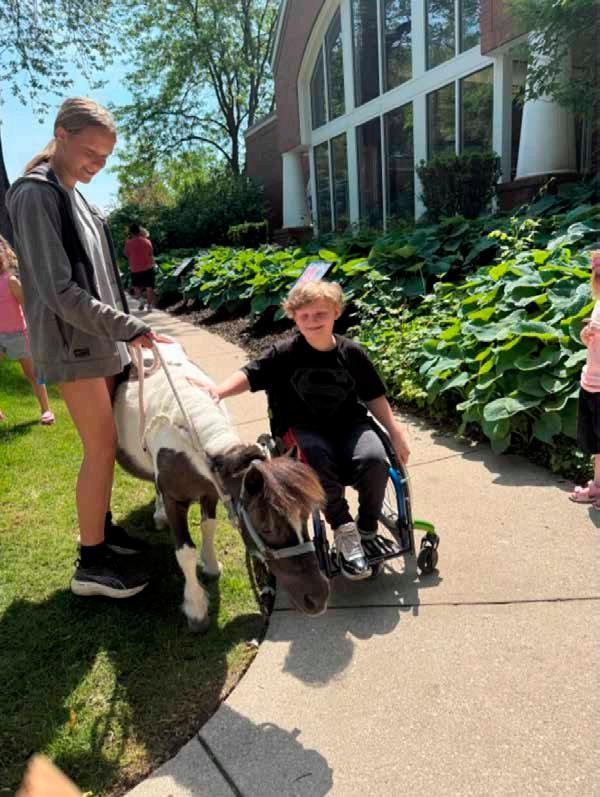
From Survival to Belonging
That sense of belonging didn’t always come easily. There were years of intense medical travel, interrupted sleep, and moments when it felt like the world didn’t know what to do with a body that broke so easily. At one point, James developed a form of blood cancer— thankfully, one with a high survival rate.

That Christmas, a local oncology support group “adopted” the family, delivering meals, gifts, and cards from the community.
“It was the first time I felt like someone saw the whole picture,” Rachelle says. “Not just the diagnosis, but the life around it. It was such a grace. And I remember thinking, I want to bring this feeling to other families, too.”
That moment was a turning point— not just in James’s recovery, but in Rachelle’s next chapter.
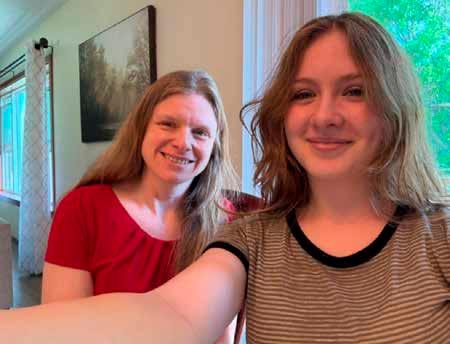
Wistful Marra
Today, Rachelle is the founder of Wistful Marra, a nonprofit that provides coaching and support for parents of medically fragile children. The name is personal—drawn from their cats— but also symbolic: a mix of longing and groundedness. Wistfulness for the life you imagined. Presence in the one you have.
“I walk with parents who are still in that fog,” she says. “Still in the waiting rooms. Still skipping lunch. Still holding their breath. It’s sacred work—not about fixing, just being with.”
Wistful Marra now serves families across the country. And though the work
is intimate and often heavy, it never feels lonely.
“These are people who already know how to love hard,” Rachelle says. “They just need someone to remind them they’re not alone.”
“We’ve been held in hard seasons,” she says. “And now we get to hold others.”
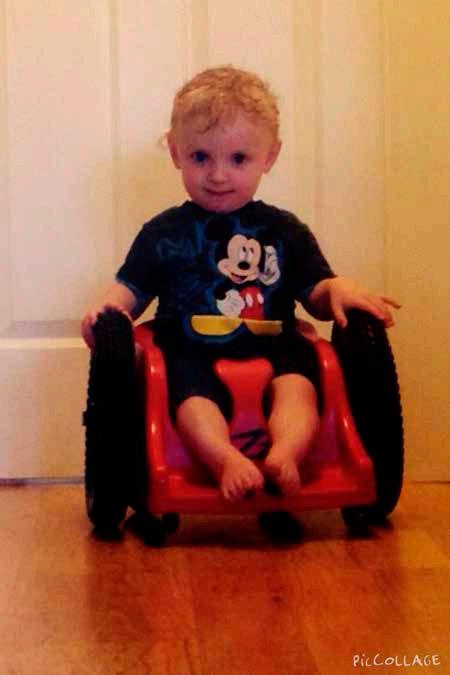
A Back-to-School Kind of Bravery
“I missed a lot of school,” he says. “So sometimes it’s hard in the classroom. But my friends help me. And I can’t wait to see them every day.”
Playing with peers isn’t always easy, especially with physical limitations. But when he finds the right rhythm, the joy is unmistakable—swimming, building with Legos, playing “Horse,” and teaming up on video games.
In the Isenhoff home, there is sacred chaos—pets underfoot, medical trips on standby, laughter and laundry and Lego bricks. There is fatigue, tenderness, and a hard-won grace that cannot be faked. There are tears behind closed doors and joy in unexpected places.

There are daily victories: brushing teeth without pain, a deep belly laugh, a full night’s sleep.
There’s no symmetry here, no polished finish. Just presence. Effort. Love that does the dishes and shows up again tomorrow.
And if you ask James what to do when life gets hard?
“Don’t let it get the best of you,” he says.Somehow, it never does.

James, In His Own Words:
What do you like about going to Shriners now?
What’s your favorite thing to do at home?
Play video games and cuddle my pets. We have two dogs, four cats, and three lizards. I don’t cuddle the lizards.
What do you say to someone going through something hard? Don’t let it get the best of you.
How do you feel about going back to school?
I’m nervous. I missed a lot of school, so sometimes it’s hard in the classroom—but my friends help me. I can’t wait to see them every day.
What do you love doing with friends?
Swimming, building with Legos, playing “Horse” basketball, and video games.










